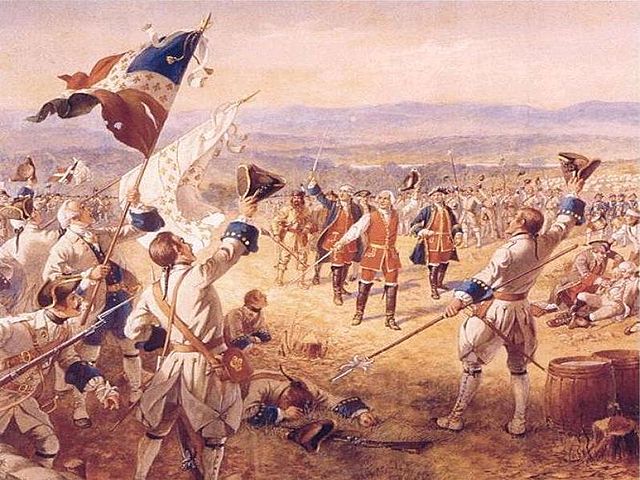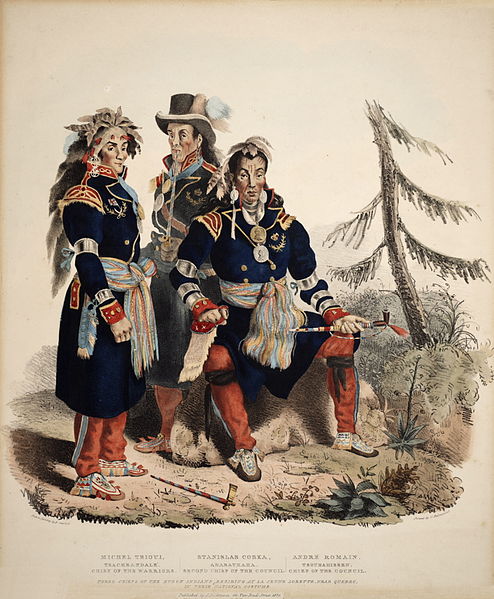The French and Indian Wars were a series of conflicts that occurred in North America between 1688 and 1763, some of which indirectly were related to the European dynastic wars. The title French and Indian War in the singular is used in the United States specifically for the warfare of 1754–63, which composed the North American theatre of the Seven Years' War and the aftermath of which led to the American Revolution. The French and Indian Wars were preceded by the Beaver Wars.
Fort Carillon controlled the portage between Lake George and Lake Champlain.
At Carillon the French won a rare victory in a battle fought according to European tactical doctrines.
Quebec is one of the thirteen provinces and territories of Canada. It is the largest province by area and the second-largest by population. Much of the population lives in urban areas along the St. Lawrence River, between its most populous city, Montreal, and the provincial capital, Quebec City. Located in Central Canada, the province shares land borders with Ontario to the west, Newfoundland and Labrador to the northeast, New Brunswick to the southeast, and a coastal border with Nunavut; in the south it borders the United States.
A depiction of Jacques Cartier by Théophile Hamel, 1844
Three Huron-Wyandot chiefs from Wendake. New France had largely peaceful relations with the Indigenous people, such as their allies the Huron. After the defeat of the Huron by their mutual enemy, the Iroquois, many fled from Ontario to Quebec.
Montcalm leading his troops into battle. Watercolour by Charles William Jefferys.
The Battle of Saint-Eustache was the final battle of the Lower Canada Rebellion.






